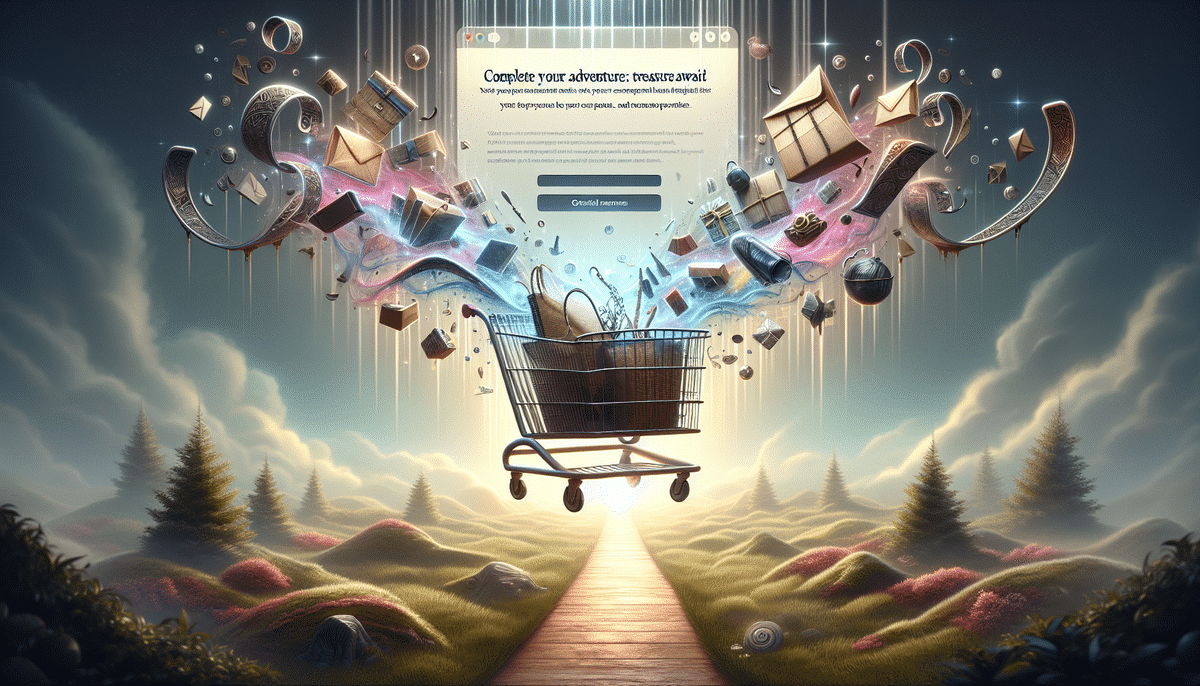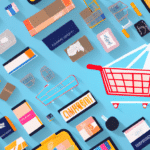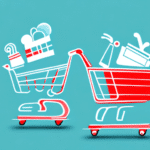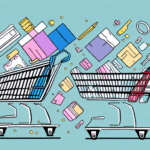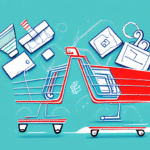Importance of Abandoned Cart Follow-Up Emails for eCommerce Businesses
Abandoned cart follow-up emails are a critical tool for eCommerce businesses aiming to recover lost sales. According to the Baymard Institute, the average cart abandonment rate is approximately 69.57%. This high percentage represents a significant opportunity for businesses to re-engage customers and boost revenue.
Beyond recovering lost sales, these emails provide valuable insights into customer behavior. By analyzing abandonment data, businesses can identify common pain points in the shopping experience, such as unexpected shipping costs or complicated checkout processes, and make informed improvements to enhance overall customer satisfaction.
Understanding the Psychology Behind Abandoned Carts
Common Reasons for Cart Abandonment
Customers abandon their carts for various reasons, including:
- Unexpected Costs: High shipping fees or additional taxes can deter customers from completing their purchase.
- Complicated Checkout Process: Lengthy or confusing checkout steps may frustrate customers, leading them to abandon their carts.
- Lack of Trust: Concerns about payment security or unfamiliarity with the brand can prevent customers from finalizing their purchases.
- Distractions: Interruptions or distractions during the shopping process can cause customers to leave without completing their order.
Addressing Emotional and Practical Concerns
Understanding the emotional state of customers when they abandon their carts is essential. They might experience hesitation, uncertainty about the product, or anxiety over spending money. Effective follow-up emails should address these concerns by:
- Providing Reassurance: Highlight the quality and benefits of the product to alleviate doubts.
- Offering Social Proof: Include customer reviews or testimonials to build trust.
- Simplifying the Process: Ensure that completing the purchase is easy and straightforward.
- Incentivizing Completion: Offer discounts or promotions to encourage customers to finalize their purchases.
Crafting Compelling Abandoned Cart Follow-Up Emails
Subject Line Strategies
The subject line is the first impression of your email. To maximize open rates:
- Use Personalization: Incorporate the customer's name or the specific product they abandoned. Example: "John, you forgot something in your cart!"
- Create a Sense of Urgency: Encourage quick action with phrases like "Complete your purchase within 24 hours."
- Invoke Curiosity: Pique interest with subject lines such as "Did you leave something behind?"
Persuasive Email Copy
Your email copy should be engaging and focused on the customer’s needs:
- Highlight Product Benefits: Emphasize what makes your product unique and valuable.
- Address Potential Concerns: Tackle any possible objections the customer might have.
- Clear Call-to-Action (CTA): Use prominent and straightforward CTAs like "Complete Your Purchase" or "Return to Your Cart."
- Maintain a Conversational Tone: Use friendly language to build a connection without sounding pushy.
Personalization, Timing, and Design Best Practices
Personalizing the Email
Personalization goes beyond addressing the customer by name. It includes referencing the specific items left in the cart and offering tailored product recommendations based on their browsing history. This personalized approach makes the customer feel valued and understood.
Optimal Timing for Follow-Ups
The timing of your follow-up emails is crucial:
- First Email: Send within an hour of cart abandonment to catch the customer while their interest is still fresh.
- Second Email: Follow up within 24 hours if the first email doesn't result in a purchase.
- Additional Reminders: Consider a third email a few days later, possibly with an added incentive.
Designing Attention-Grabbing Templates
Your email design should be visually appealing and easy to navigate:
- Responsive Design: Ensure your emails look good on all devices, including smartphones and tablets.
- High-Quality Images: Display clear images of the abandoned products to remind customers of their interest.
- Prominent CTA Buttons: Make your call-to-action buttons stand out with contrasting colors and clear labels.
- Minimal Distractions: Keep the layout clean and focus on the primary goal of completing the purchase.
Incentive Strategies and Optimization
Offering Discounts and Promotions
Incentives can effectively motivate customers to complete their purchases:
- Discount Codes: Provide a percentage or fixed discount on their order.
- Free Shipping: Eliminate shipping costs to make the purchase more attractive.
- Limited-Time Offers: Create urgency with time-bound promotions.
Other Incentive Options
Beyond discounts, consider additional incentives:
- Free Gifts: Offer a complimentary product with their purchase.
- Exclusive Access: Provide early access to new products or special sales.
- Loyalty Points: Reward customers with points that can be redeemed for future purchases.
It's important to use incentives strategically to avoid devaluing your products. Offer relevant incentives that enhance the customer's perceived value without significantly impacting your profit margins.
Testing, Measuring, and Avoiding Common Mistakes
A/B Testing Strategies
A/B testing allows you to determine which elements of your emails are most effective:
- Subject Lines: Test different styles to see which ones generate higher open rates.
- Email Copy: Experiment with varying lengths, tones, and content structures.
- CTA Buttons: Compare different placements, colors, and text for better click-through rates.
- Incentives: Assess the impact of different types and levels of incentives on conversion rates.
Key Metrics to Track
Monitor the following metrics to gauge the effectiveness of your abandoned cart emails:
- Open Rate: The percentage of recipients who open your email.
- Click-Through Rate (CTR): The percentage of recipients who click on your CTA.
- Conversion Rate: The percentage of recipients who complete their purchase.
- Revenue Recovered: The total sales generated from follow-up emails.
Common Mistakes to Avoid
Ensure your abandoned cart emails are effective by avoiding these common pitfalls:
- Generic Subject Lines: Stand out with personalized and relevant subject lines.
- Overloading with Information: Keep your emails focused and avoid unnecessary distractions.
- Excessive Incentives: Use incentives sparingly to prevent undermining your product’s value.
- Sending Too Frequently: Respect your customers by not bombarding them with follow-up emails.
Examples and Integration Strategies
Successful Examples from Top Brands
Analyzing successful abandoned cart emails from leading eCommerce brands can provide valuable insights:
- Amazon: Utilizes personalized product recommendations and clear CTAs to encourage completion of purchases.
- Shopify Stores: Often include customer testimonials and limited-time discounts to boost conversions.
- Nike: Uses high-quality imagery and motivational language to reconnect with customers.
By studying these examples, you can identify effective strategies and apply similar techniques to your own email campaigns.
Integrating Automation into Your Workflow
Automating your abandoned cart follow-up process streamlines operations and ensures timely communication:
- Use CRM Systems: Implement customer relationship management tools to track and manage abandoned carts.
- Email Marketing Software: Leverage platforms like Mailchimp or Klaviyo to set up automated email sequences.
- Set Up Triggers: Configure automated triggers based on specific actions, such as cart abandonment within a certain timeframe.
Automation not only saves time but also ensures consistency in your follow-up efforts, enhancing the chances of recovering lost sales.
Conclusion: Final Thoughts on Crafting an Effective Abandoned Cart Follow-Up Email Strategy
Developing an effective abandoned cart follow-up email strategy requires a combination of understanding customer behavior, crafting compelling content, personalizing communications, and continuously optimizing through testing. By implementing these strategies, eCommerce businesses can significantly reduce cart abandonment rates, recover lost sales, and build stronger relationships with their customers.
Remember to:
- Personalize Your Emails: Tailor content to individual customer needs and behaviors.
- Optimize Timing: Send follow-ups at strategic intervals to maximize engagement.
- Use Clear CTAs: Guide customers towards completing their purchases with straightforward calls to action.
- Continuously Test and Refine: Utilize A/B testing and analytics to enhance email performance over time.
By following these best practices and leveraging automation tools, you can create a robust abandoned cart recovery system that drives sustained growth and customer loyalty.













